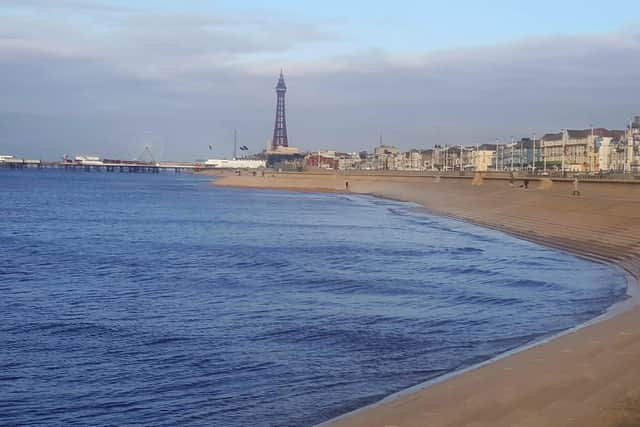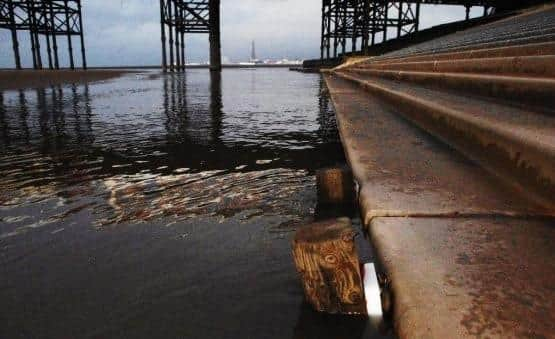Work needed to protect Blackpool's beaches from erosion
and live on Freeview channel 276
Environmental changes on the beaches between North Pier and South Pier have created channels which are in danger of undermining the stepped sea defences.
Experts are proposing to build 16 rocky headlands, also known as groynes, on a 3km stretch of the beach to retain the sand, which will need planning permission and a Marine Licence.
Advertisement
Hide AdAdvertisement
Hide Ad

The proposals are set out in a preliminary environmental report submitted by consultants Jacobs as part of the Blackpool Beach Management Outline Business Case.
Documents lodged with town hall planners say the current sea defences, completed in 2011, are in good condition.
However “dynamic” changes to the beach and “the recently identified long term trend in beach lowering” have caused inter-tidal channels to form and expose the lowest points (or ‘toes’) of the sea defences in places.
The report warns this “has the potential to result in undermining and failure of the defences” putting properties at risk of coastal erosion.
Advertisement
Hide AdAdvertisement
Hide Ad

It is proposed to build 16 fishtail rock headlands or groynes, each 100 metres in length, at 100 metre intervals on the upper beach, to disperse waves and prevent erosion.
These would “reduce the recently identified long term trend of beach lowering.”
It is then proposed 10,000 cubic metres of sand is deposited on the upper beach (in the bays between the rock headlands) every 10 years after the project is finished to offset potential losses of sand during extreme storms.
Initial studies have shown the scheme is unlikely to adversely affect any natural habitats because the area does not attract diverse wildlife due to its urban location within a busy tourist area.
Advertisement
Hide AdAdvertisement
Hide AdHowever access to parts of the beach may need to be temporarily restricted while improvements are underway.
Work is due to begin in September 2025 with the scheme set for completion by September 2027.
It would be carried out following work to upgrade existing coastal defences in Bispham, as part of investment to protect around 4,000 properties from the threat of flooding.